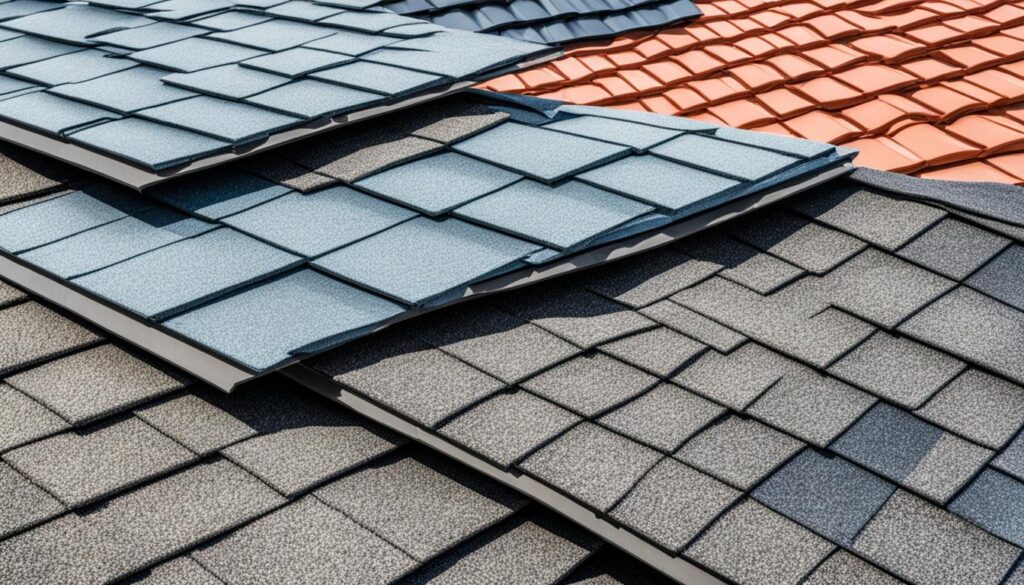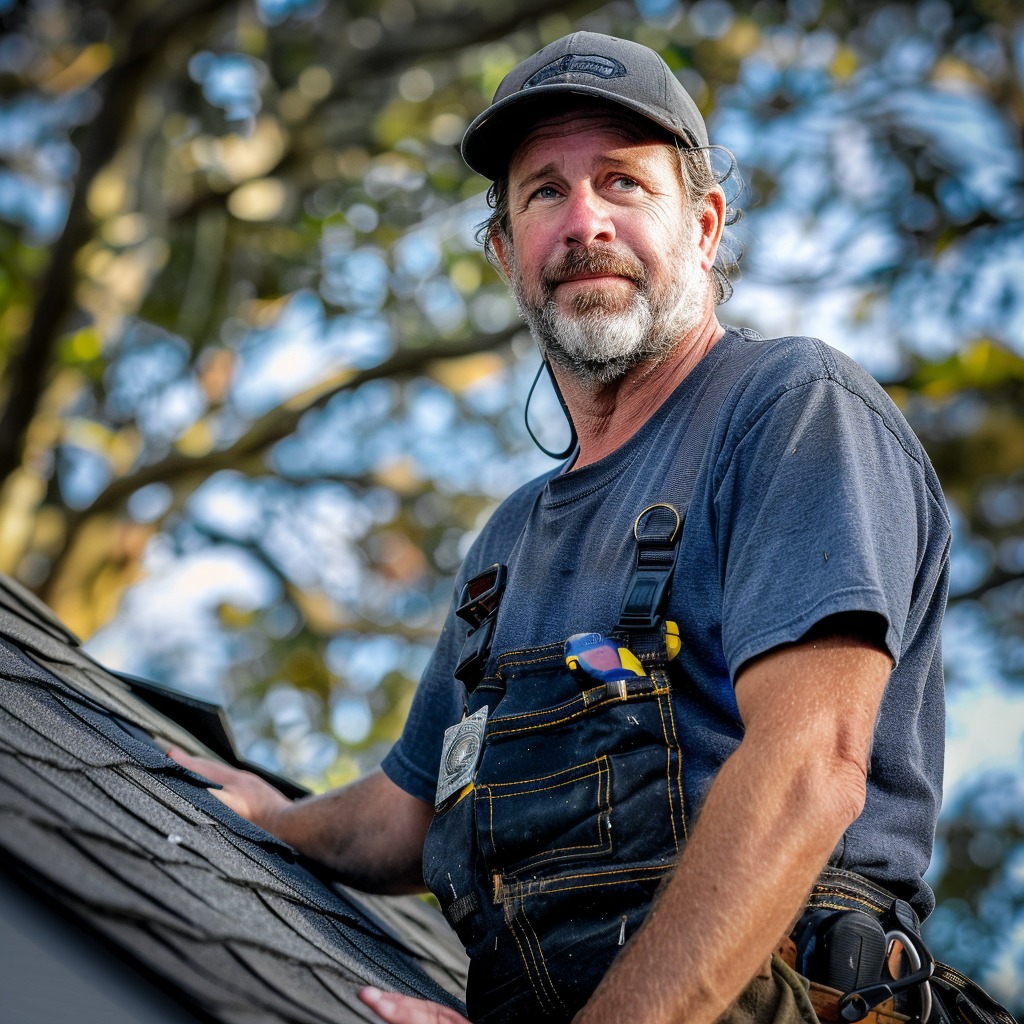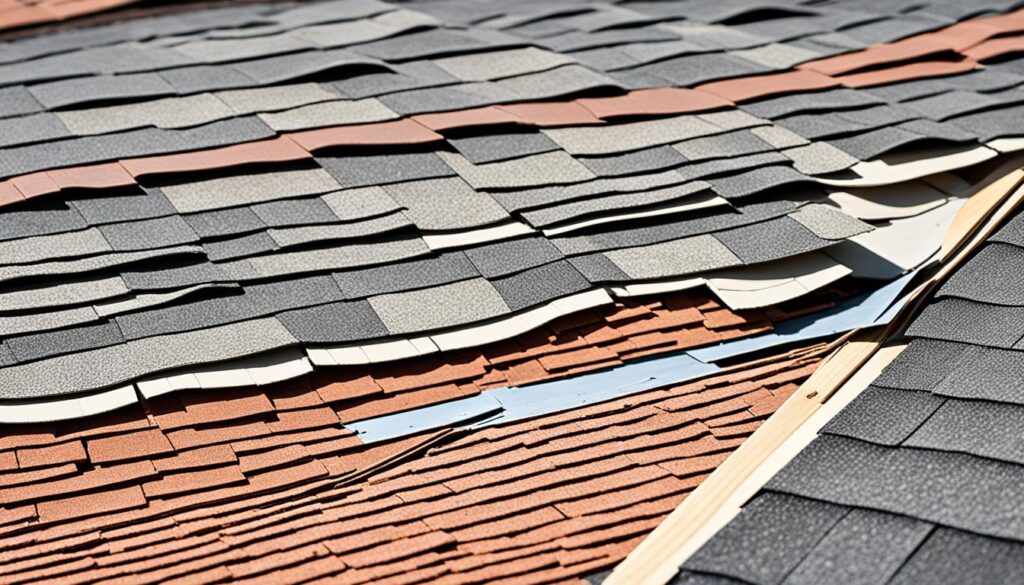Have you ever wondered what lies beneath the shingles on your roof? Is it simply a single layer of protection, or are there hidden depths that contribute to its durability and longevity? In this comprehensive guide, we will delve into the intricacies of roof layers, exploring the different components that make up a roofing system. It’s time to uncover the truth about what lies beneath your roof!
Key Takeaways:
- Roof layers are not just about aesthetics; they play a crucial role in protecting your home and ensuring its energy efficiency.
- A roofing system consists of multiple layers, including insulation, ventilation, roof deck, underlayment, ice and water shield, ridge vents, roofing material, and flashing.
- Each layer serves a specific purpose and contributes to the overall durability and performance of your roof.
- Understanding the different layers helps homeowners make informed decisions about the best roofing materials and construction techniques.
- Investing in multi-layer roofing systems can offer numerous benefits, including enhanced protection against the elements and increased energy efficiency.
Insulation and Ventilation
Insulation and ventilation are crucial components of a well-designed roofing system. They play a significant role in enhancing energy efficiency, preventing damage, and maintaining a comfortable living environment. Let’s explore the importance of roof insulation, attic insulation, roof ventilation, attic ventilation, and their impact on energy efficiency and preventing ice damming.
The Importance of Roof Insulation
Roof insulation acts as a barrier against heat transfer, preventing heat from escaping during colder months and from entering during warmer months. By effectively regulating the temperature in your home, roof insulation helps reduce heating and cooling loads, thus improving energy efficiency. Additionally, insulation plays a vital role in preventing damage from ice damming.
The Role of Attic Insulation
Attic insulation is particularly crucial as it forms a protective layer between the living space and the attic. It helps maintain a comfortable temperature by preventing heat transfer between these areas. This insulation layer reduces the strain on heating and cooling systems, leading to energy savings. Moreover, attic insulation helps regulate roof temperature and prevents the formation of ice dams.
The Significance of Roof Ventilation
Roof ventilation is essential for maintaining a healthy roof system. It allows for natural airflow, preventing the buildup of moisture and reducing the risk of mold and rot. Proper ventilation extends the lifespan of the roof and helps to prevent problems associated with excessive heat and moisture accumulation.
Benefits of Attic Ventilation
Attic ventilation complements roof ventilation by promoting proper air circulation within the attic space. It helps remove hot air in the summer, preventing heat buildup that can increase cooling costs. During colder months, attic ventilation prevents condensation by equalizing the temperature, reducing the risk of moisture damage and ice damming.
Inadequate insulation and ventilation can lead to several issues, including increased energy consumption, decreased comfort levels, and potential structural damage. It’s essential to invest in proper insulation and ventilation to ensure the long-term performance and durability of your roof.
By combining effective roof insulation and proper ventilation, homeowners can significantly improve energy efficiency, reduce utility expenses, and prevent costly repairs. Taking these proactive measures not only benefits your home but also contributes to a greener and more sustainable environment.
In the next section, we will discuss the role of the roof deck and underlayment in the overall roofing system.
Roof Deck and Underlayment
When it comes to constructing a solid and durable roof, two essential layers play a crucial role: the roof deck and underlayment. These layers work together to provide a strong foundation and enhance the water resistance of the entire roofing system.
Roof Deck
The roof deck, also known as sheathing, is the layer installed over the framing and serves as the base for the roof system. It is typically made of plywood or oriented strand board (OSB), providing a stable and sturdy surface for the other layers to be installed on.
One of the key functions of the roof deck is to act as a nail bed for the shingles. During the installation process, the shingles are securely fastened to the roof deck, ensuring they stay in place, even during high winds or severe weather conditions.
Underlayment
Underlayment is a protective layer that adds an extra level of water resistance to the roof system. It is typically made of felt or asphalt and is installed directly on top of the roof deck.
The underlayment serves as a barrier, preventing rainwater from infiltrating underneath the shingles and reaching the roof deck. In addition to its water resistance properties, underlayment also provides some level of insulation and helps to reduce heat transfer through the roof.
By adding underlayment to the roofing system, homeowners can have peace of mind knowing that their roof is protected from moisture damage and leaks.
| Roof Deck | Underlayment |
|---|---|
| Installed over the framing | Installed on top of the roof deck |
| Serves as the base for the roof system | Provides an extra level of water resistance |
| Acts as a nail bed for the shingles | Prevents rainwater from infiltrating underneath the shingles |
| Typically made of plywood or OSB | Usually made of felt or asphalt |
Having a solid roof deck and a reliable underlayment is vital for the long-term performance and durability of your roof. These layers work together to create a strong foundation and enhance the water resistance of the entire roofing system.

Ice and Water Shield
The ice and water shield is a crucial component of a roofing system, providing an extra layer of protection against water intrusion. This specialized layer consists of a waterproof membrane with a sticky surface that adheres to the roof deck, creating a watertight seal.
During severe weather conditions, such as heavy rain or snowstorms, or if roofing materials are blown off, the ice and water shield acts as a barrier, preventing water from infiltrating the home. Its waterproof properties ensure that even in high wind conditions, the risk of water penetration is significantly reduced.
The watertight seal created by the ice and water shield is especially important around nail penetrations. As roofing nails are driven through the shingles and into the roof deck, the shield forms a protective barrier that seals around the nails, further increasing the resistance to water infiltration.
“The ice and water shield is an invaluable addition to any roofing system, providing enhanced protection against water damage. Its waterproof membrane and watertight seal effectively safeguard the home, offering peace of mind to homeowners.” – John Smith, Roofing Expert
When considering a roofing project, ensuring the installation of an ice and water shield is essential. Its waterproof membrane, combined with its ability to create a watertight seal, strengthens the overall integrity of the roof and minimizes the risk of water damage.
| Benefits of Ice and Water Shield |
|---|
| 1. Enhanced water resistance |
| 2. Excellent protection during severe weather events |
| 3. Reduces the risk of water infiltration |
| 4. Increases the lifespan of the roof |
| 5. Provides peace of mind to homeowners |
The ice and water shield, with its waterproof membrane and watertight seal, is an indispensable layer in a roofing system. Its ability to prevent water intrusion adds an extra level of protection, ensuring the longevity and durability of the roof.
Ridge Vents and Roofing Material
Proper ventilation is essential in maintaining a healthy and efficient roofing system. One critical component of this system is the installation of ridge vents. Ridge vents serve as an outlet for hot air to naturally escape from the attic space, promoting airflow and preventing moisture buildup. This ventilation mechanism not only helps regulate the temperature inside your home but also extends the lifespan of your roof.
When it comes to selecting the roofing material for your home, there are various options to consider. Shingles are a popular choice due to their versatility, durability, and wide range of styles and colors available. Composite roofing, made from a combination of materials such as asphalt and recycled plastics, offers excellent strength and weather resistance. Metal roofing provides durability and energy efficiency, making it an eco-friendly choice. Lastly, slate roofing offers a timeless and elegant appearance, along with exceptional durability.
Each roofing material has its own unique advantages and considerations. Shingles are cost-effective and easy to install, making them a popular choice for residential properties. Composite roofing combines affordability with durability, providing a long-lasting solution. Metal roofing is known for its longevity and energy efficiency, helping homeowners reduce their environmental impact. Slate roofing offers unmatched beauty and longevity, making it a premium choice for those seeking a sophisticated aesthetic.
Ultimately, the choice of roofing material depends on your specific needs, preferences, and budget. It’s essential to consider factors such as durability, maintenance requirements, weather resistance, and aesthetic appeal when making a decision. Consulting with roofing professionals can provide valuable insights and guidance to help you choose the ideal roofing material for your home.
| Roofing Material | Advantages |
|---|---|
| Shingles | Cost-effective, versatile, wide range of styles and colors |
| Composite Roofing | Durable, weather-resistant, made from recycled materials |
| Metal Roofing | Long-lasting, energy-efficient, eco-friendly |
| Slate Roofing | Elegant, durable, timeless |

As you decide on the roofing material that best suits your needs, it’s important to also consider the overall aesthetic impact it will have on your home. A well-chosen roofing material can enhance the curb appeal and value of your property, while also providing the necessary protection from the elements.
Whether you opt for shingles, composite roofing, metal roofing, or slate roofing, investing in a high-quality and professionally installed roof will ensure your home remains safe, protected, and visually appealing for years to come.
Flashing and Professional Installation
Flashing is an essential component of any roofing system. Its primary function is to prevent water penetration at vulnerable areas of the roof, including chimneys, walls, vents, and skylights.
Typically made of materials such as aluminum, copper, or galvanized steel, flashing is strategically installed to create a watertight seal, ensuring that water doesn’t find its way into your home.
Proper installation of flashing is crucial to the overall effectiveness of your roof. A poorly installed flashing can compromise its functionality, leading to water leaks, damage, and a reduced lifespan for your roof.
For this reason, it is highly recommended to hire a professional roofing contractor who has the knowledge, skills, and experience to install flashing correctly. A reputable contractor will ensure that the flashing is installed securely and aligned with industry standards, minimizing the risk of water penetration and potential damage to your roof and home.
When choosing a roofing contractor, it is important to look for a licensed, bonded, and insured professional. This provides assurance that the contractor meets the necessary qualifications, has liability coverage, and operates according to industry standards and regulations.
By investing in proper flashing installation by a qualified contractor, you can have peace of mind knowing that your roof is protected from water penetration and potential damage, ensuring the longevity and performance of your roofing system.
Conclusion
Understanding the different layers of a roof is crucial for homeowners to fully grasp the complexity and functionality of a roofing system. Each layer, from insulation and ventilation to roofing material and flashing, plays a vital role in providing ultimate protection, energy efficiency, and durability. By investing in high-quality materials and hiring professional contractors for installation, homeowners can reap the benefits of a long-lasting and energy-efficient roof.
Maintaining the roof and adhering to a regular maintenance schedule are essential to ensure its continued protection and optimal performance. Inspecting the roof for any signs of damage, such as loose shingles or leaks, can help identify issues before they worsen. Regular cleaning of gutters and removing debris will prevent clogs and promote proper water drainage, reducing the risk of water damage.
By understanding the purpose of each layer and taking proactive steps in maintenance, homeowners can prolong the lifespan of their roof, enhance energy efficiency, and protect their investment. Maintaining a healthy roofing system not only safeguards the interior of the home but also adds value and curb appeal.

Meet William Adams, a seasoned roofing expert with over 30 years of hands-on experience in the industry. Having worked tirelessly under the scorching sun and through the fiercest storms, William brings a wealth of knowledge and expertise to the table. Hailing from the heart of the USA, he’s witnessed the evolution of roofing practices firsthand, mastering every aspect along the way. Now retired from the field, William spends his days cherishing time with his loved ones while sharing his invaluable insights through this platform. With William at the helm, you can trust that every tip, advice, and recommendation provided is backed by years of real-world experience and unwavering dedication to quality craftsmanship. Join us as we journey through the world of roofing, guided by the wisdom and passion of a true industry veteran.

